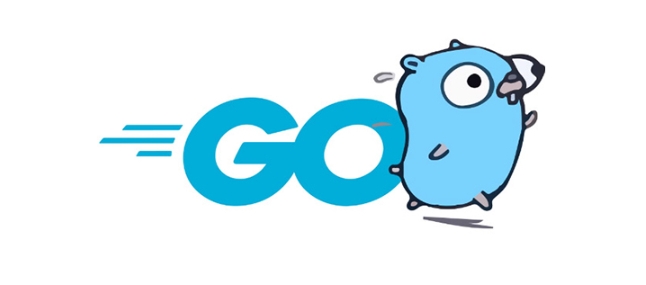Deep Dive into the Go Garbage Collector
Jul 29, 2025 am 02:51 AMGo's garbage collector (GC) uses a concurrent three-color marking cleaning algorithm to achieve low latency through the short "stop world" stage and concurrent marking and cleaning process; its core mechanisms include marking preparation, concurrent marking, marking termination and concurrent cleaning, using the write barrier to maintain the three-color invariance, ensuring that black objects do not point directly to white objects; the main goal of GC is to maintain submillisecond pause time, performance predictable and developer ease of use, which sacrifices a certain amount of CPU efficiency and memory usage; GC frequency can be adjusted through GOGC environment variables or runtime/debug packages; optimization suggestions include reducing allocation on hotspot paths, using sync.Pool to reuse objects, avoiding frequent allocation of small objects, paying attention to object life cycle extension caused by closures and goroutine, and monitoring GC behavior through pprof and runtime API; Since 1.5, GC has been continuously improving, gradually reducing STW time and improving large-scale performance; the ultimate principle is: reduce allocation, reuse resources, and enable GC to run efficiently.

The Go garbage collector (GC) is a key part of what makes Go both efficient and developer-friendly. While Go's “write once, run fast” philosophy hides much of the complexity, understanding how the GC works under the hood can help you write more performant applications and avoid common performance pitfalls. Let's take a deep dive into how Go's garbage collector operates, how it evolved, and what it means for your code.

How the Go GC Works: Tricolor Mark-and-Sweep
Go uses a concurrent, tri-color mark-and-sweep garbage collector. This algorithm runs alongside your program (the "mutator") and aims to minimize pause times—critical for low-lateency applications.
Here's how it works in stages:

Mark Setup (Stop-the-World) :
The GC briefly pauses the program to initialize the marking process. This phase is very short (microseconds), but it's still a full stop.-
Concurrent Marking :
Goroutines help traverse the heap, marking objects that are still reachable from root references (like globals, stack variables, etc.). This happens concurrently with your application code.
Mark Termination (Stop-the-World) :
Another brief pause to finalize marking, ensure all objects are accounted for, and clean up internal structures.Sweeping (Concurrent) :
The GC goes through unmarked objects and reclaims their memory. New allocations can happen during this phase.
The tri-color abstraction is central:
- White : Objects not yet reached by the GC.
- Grey : Objects reachable, but their children haven't been scanned.
- Black : Objects fully scanned and known to be live.
The invariant: No black object points to a white object. The GC maintains this using write barriers —small hooks triggered whenever a pointer is updated. If a black object is about to point to a white object, the write barrier ensures the white object is marked grey, preserving correctness.
Key Design Goals and Trade-offs
Go's GC prioritizes low latency over throughput or memory efficiency . This makes sense for Go's typical use cases: network servers, APIs, and CLI tools where responsiveness matters.
Goals:
- Sub-millisecond pause times : Achived via concurrency and fine-grained STW phases.
- Predictable performance : GC behavior scales well with heap size.
- Developer simplicity : No manual memory management or tuning needed in most cases.
Trade-offs:
- CPU overhead : The GC runs frequently and uses multiple cores.
- Higher memory usage : The heap can grow larger than strictly necessary to avoid frequent collections.
- Allocation sensitivity : Performance depends heavily on allocation rate.
Tuning the GC: GOGC and Beyond
The primary tuning knob is the GOGC environment variable (default 100).
-
GOGC=100means: run GC when heap allocations double since the last collection. -
GOGC=50→ GC runs more aggressively (when heap grows by 50%). -
GOGC=offdisables GC entirely (not recommended).
You can also adjust GC behavior at runtime:
debug.SetGCPercent(50) // equivalent to GOGC=50
But in most cases, Go's default behavior is well-tuned. Premature tuning can hurt more than help.
Practical Tips for Reducing GC Pressure
Even with a great GC, poor memory practices can hurt performance. Here's how to keep GC overhead low:
Minimize allocations in hot paths
Reuse buffers withsync.Pool, avoid unnecessarymake(), and prefer stack allocation when possible.var bufferPool = sync.Pool{ New: func() interface{} { return make([]byte, 1024) }, }Avoid frequently small allocations
Strings, slices, and maps are common culprits. Consider pooling or pre-sizing.Be careful with closures and goroutines
Capture variables may extend object lifetimes, delaying collection.Use
pprofto analyze allocationsgo tool pprof --alloc_objects your-binary mem.prof
Look for functions with high allocation rates.
Monitor GC stats programmatically
Useruntime.ReadMemStats()ordebug.GCStatsto track GC frequency, pause times, and heap size.- Go 1.6 : Better write barriers, reduced STW.
- Go 1.15 : Proportional sweep, improved pacing.
- Go 1.19 : Async preemption helps GC reach goroutines faster.
- Go 1.22 : Further STW reductions and better heap management.
- Diagnose memory issues
- Reduce allocation chun
- Interpret profiling data
- Avoid anti-patterns
Recent Improvements and Future Directions
Go's GC has improved significantly since Go 1.5 (when the concurrent GC was introduced):
The Go team continues to target sub-100 microsecond pauses even for large heaps.
Bottom Line
The Go garbage collector is highly optimized for real-world server workloads. It's not zero-cost, but it's predictable and mostly invisible—until it isn't.
Understanding how it works helps you:
You don't need to be a GC expert to use Go well, but knowing when and why allocations matter can make your services faster and more scalable.
Basically: allocate less, reuse more, and let the GC do its job.
The above is the detailed content of Deep Dive into the Go Garbage Collector. For more information, please follow other related articles on the PHP Chinese website!

Hot AI Tools

Undress AI Tool
Undress images for free

Undresser.AI Undress
AI-powered app for creating realistic nude photos

AI Clothes Remover
Online AI tool for removing clothes from photos.

Clothoff.io
AI clothes remover

Video Face Swap
Swap faces in any video effortlessly with our completely free AI face swap tool!

Hot Article

Hot Tools

Notepad++7.3.1
Easy-to-use and free code editor

SublimeText3 Chinese version
Chinese version, very easy to use

Zend Studio 13.0.1
Powerful PHP integrated development environment

Dreamweaver CS6
Visual web development tools

SublimeText3 Mac version
God-level code editing software (SublimeText3)

Hot Topics
 A Deep Dive into PHP's Internal Garbage Collection Mechanism
Jul 28, 2025 am 04:44 AM
A Deep Dive into PHP's Internal Garbage Collection Mechanism
Jul 28, 2025 am 04:44 AM
PHP's garbage collection mechanism is based on reference counting, but circular references need to be processed by a periodic circular garbage collector; 1. Reference count releases memory immediately when there is no reference to the variable; 2. Reference reference causes memory to be unable to be automatically released, and it depends on GC to detect and clean it; 3. GC is triggered when the "possible root" zval reaches the threshold or manually calls gc_collect_cycles(); 4. Long-term running PHP applications should monitor gc_status() and call gc_collect_cycles() in time to avoid memory leakage; 5. Best practices include avoiding circular references, using gc_disable() to optimize performance key areas, and dereference objects through the ORM's clear() method.
 How does the switch statement work in Go?
Jul 30, 2025 am 05:11 AM
How does the switch statement work in Go?
Jul 30, 2025 am 05:11 AM
Go's switch statement will not be executed throughout the process by default and will automatically exit after matching the first condition. 1. Switch starts with a keyword and can carry one or no value; 2. Case matches from top to bottom in order, only the first match is run; 3. Multiple conditions can be listed by commas to match the same case; 4. There is no need to manually add break, but can be forced through; 5.default is used for unmatched cases, usually placed at the end.
 How to use reflection in Go?
Jul 28, 2025 am 12:26 AM
How to use reflection in Go?
Jul 28, 2025 am 12:26 AM
Usereflect.ValueOfandreflect.TypeOftogetruntimevaluesandtypes;2.Inspecttypedetailswithreflect.TypemethodslikeName()andKind();3.Modifyvaluesviareflect.Value.Elem()andCanSet()afterpassingapointer;4.CallmethodsdynamicallyusingMethodByName()andCall();5.R
 how to break from a nested loop in go
Jul 29, 2025 am 01:58 AM
how to break from a nested loop in go
Jul 29, 2025 am 01:58 AM
In Go, to break out of nested loops, you should use labeled break statements or return through functions; 1. Use labeled break: Place the tag before the outer loop, such as OuterLoop:for{...}, use breakOuterLoop in the inner loop to directly exit the outer loop; 2. Put the nested loop into the function, and return in advance when the conditions are met, thereby terminating all loops; 3. Avoid using flag variables or goto, the former is lengthy and easy to make mistakes, and the latter is not recommended; the correct way is that the tag must be before the loop rather than after it, which is the idiomatic way to break out of multi-layer loops in Go.
 How to handle timeouts in Go?
Jul 27, 2025 am 03:44 AM
How to handle timeouts in Go?
Jul 27, 2025 am 03:44 AM
Usecontext.WithTimeouttocreateacancellablecontextwithadeadlineandalwayscallcancel()toreleaseresources.2.ForHTTPrequests,settimeoutsusinghttp.Client.Timeoutorusecontextviahttp.NewRequestWithContextforper-requestcontrol.3.Ingoroutineswithchannels,usese
 Using the Context Package in Go for Cancellation and Timeouts
Jul 29, 2025 am 04:08 AM
Using the Context Package in Go for Cancellation and Timeouts
Jul 29, 2025 am 04:08 AM
Usecontexttopropagatecancellationanddeadlinesacrossgoroutines,enablingcooperativecancellationinHTTPservers,backgroundtasks,andchainedcalls.2.Withcontext.WithCancel(),createacancellablecontextandcallcancel()tosignaltermination,alwaysdeferringcancel()t
 Efficient JSON Parsing and Manipulation in Go
Jul 27, 2025 am 03:55 AM
Efficient JSON Parsing and Manipulation in Go
Jul 27, 2025 am 03:55 AM
UsestructswithPERJSontagsFeRpredictabledatoensurefast, safeparsingwithcompile-timetypesafety.2.avoidmap [string] interface {string] interface {string] interface {string] interface {string] interface {string] interface {string] interface {string] interface {string] interface {string] interface {string] interface {string] interface {string] interface {string] interface {string] interface {string] interface {string] interface {string] interface {string] interface {string] interface {string] interface {string] interface {string] interface {string] interface {string] interface {string] interface {string] interface {string] interface {string] }duetoreflectionoverheadandruntimetypeassertionsunlessdealingwithtrulydynamicJSON.3.Usejson.RawMessagefordeferredorselectivep
 Building a GraphQL Server in Go
Jul 28, 2025 am 02:10 AM
Building a GraphQL Server in Go
Jul 28, 2025 am 02:10 AM
InitializeaGomodulewithgomodinit,2.InstallgqlgenCLI,3.Defineaschemainschema.graphqls,4.Rungqlgeninittogeneratemodelsandresolvers,5.Implementresolverfunctionsforqueriesandmutations,6.SetupanHTTPserverusingthegeneratedschema,and7.RuntheservertoaccessGr







